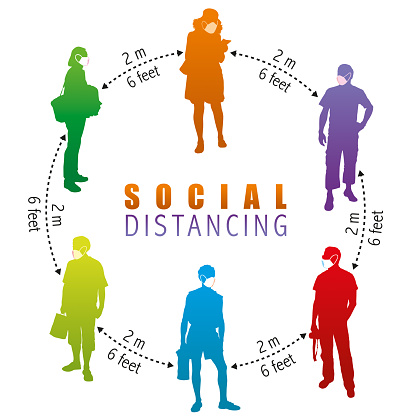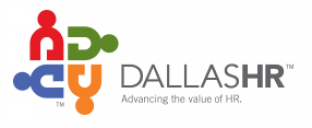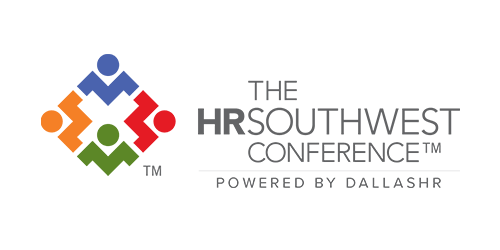
COVID-19 and the New Workplace
Across the country, businesses and workplaces are reopening or making plans to as state and local stay-at-home orders and restrictions expire. What will the new workplace look like? How will employees be safe? DallasHR dove into some of the latest research and emerging trends to give employers and employees a bit more insight into what’s to come.
Changes to the workplace itself
First there was the open-plan office. Starting in the 1960s, businesses moved to cubicles, a concept that gained in popularity over the last ten to 20 years.
Now, the pandemic has introduced the idea of the six feet office. In April, Cushman & Wakefield gave the concept this name, noting “the entire world now understands the importance of staying six feet away.” A Forbes article noted these workplace changes will include barriers between desks, one-way pedestrian lanes, visual guides, elevator capacity limits and a supply of disposable masks and cleaning supplies. Huddle spaces, breakout rooms and gathering around a single monitor or video screen will be out of the question for the near future, at least until effective treatment and a vaccine can be administered. A recent PwC survey found 65 percent of CFOs plan to reconfigure their workplaces for safety precautions and more than half plan to move to a shift model to reduce the potential for exposure.

In certain businesses, additional safeguards will be in place. Manufacturing will eliminate shift crossover and implement cleaning between shifts. Retail may continue curbside pickup out of convenience in addition to safety. Grocery stores have already put up plastic sneeze guards, and it’s likely these will be part of the reopening measures for other businesses, too.
Masks and health checks
In April, the CDC issued guidance recommending people wear cloth face coverings or masks in public, especially when maintaining a six-foot social distance is not possible. Many stay-at-home orders have been expanded to include this guidance. It is at employers’ discretion to require employees to wear masks while at the workplace.
To protect their workforces, employers may also ask employees to provide information on the following:
- A positive result or diagnosis of COVID-19
- Symptoms of COVID-19
- Evidence of close contact or guidance from a health official to self-isolate due to exposure
Employers can implement a temperature check protocol upon entry to workplace facilities, but these checks should be reliable, effective, performed consistently and protect employee privacy (Source: Littler).
Remote work

The sweeping shutdowns in March accelerated the overall shift to remote work. As businesses reopen, many employees—nonessential and essential—may continue to work from home. A March 2020 Gartner survey found that 74 percent of companies plan to shift a greater proportion of their workforce to the remote model. These companies note up to 20 percent of their employees might be permanently remote. And Slack has found most knowledge workers believe their employers will adopt more friendly work-from-home policies going forward.
Protecting employees and the workplace in the time of COVID-19 is a new challenge for employers in general—and HR in particular. What is your company planning? What are you doing to safely reopen and to address the health of your employees?
DallasHR is the third largest SHRM affiliate chapter in the nation. With more than 2,300 engaged HR professionals, the Chapter has been Advancing the Value of HR since 1939 through cutting-edge education, fun networking events and opportunities to share best practices with others in the field of HR. The Chapter powers The HRSouthwest Conference, one of the largest regional HR events in the U.S. hosting more than 2,400 attendees in Fort Worth annually. DallasHR events are held in both Dallas and Collin Counties. Visit us at dallashr.org to join or hrsouthwest.com to register and follow us at #DALLASHR, #HRSWC.





